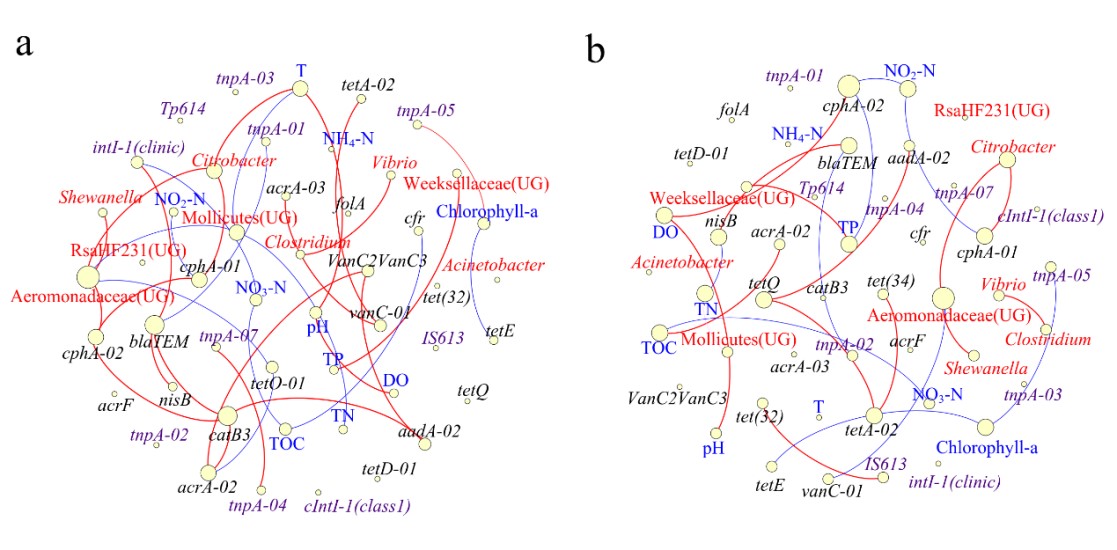Highlights
Opportunistic Pathogens and Antibiotic Resistance Genes are Common in Crayfish Gut
Diseases in agricultural production usually result in huge economic losses. In order to treat bacterial diseases, antibiotics are often used in agricultural production, including aquaculture. However, the use of antibiotics often leads to the emergence of drug-resistant strains, posing a potential threat to ecological environment security and even human health. Antibiotic resistance genes (ARGs), as a new environmental pollutant, are the genetic basis of bacterial resistance, which can lead to drug resistance of opportunistic pathogens. Therefore, ARGs have received extensively scientific attention.
Aquaculture environment is very complex. The cultivation, animal husbandry, human medical activities and bacterial disease prevention in aquaculture may all affect antibiotic resistance genes in aquaculture. However, the research on the distribution and influencing factors of intestinal microbiota, ARGs, especially high-risk ARGs of farming animals in main aquaculture areas in China is still lacking.
Recently, in a collaboration with Prof. Li Huan from Lanzhou University, a research team led by Dr. Wu Shangong and Prof. Wu Chenxi from Institute of Hydrobiology (IHB) of the Chinese Academy of Sciences illustrated the distribution and differences of crayfish intestinal ARGs and microbiota in main culture areas in China, and the distribution and interaction of pathogenic bacteria and high-risk ARGs in crayfish gut. This study was published in Science of the Total Environment.
Firstly, the researchers studied the composition and distribution of crayfish gut microbes. The gut microbes of crayfish were dominated by Proteobacteria at the phylum level, and Mollicutes (UG) at the genus level. Permutational multivariate analysis of variance (PERMANOVA) revealed significant differences in the gut microbial community structure of crayfish between Jiangsu Province and others.
Then, the researchers studied the characteristics and influencing factors of antibiotic resistance genes. ARGs were abundant in crayfish gut, with the highest abundance of β-lactam resistance genes, followed by tetracycline resistance genes. Habitat, environmental factors (NO3-N, pH and water temperature) and microbial α diversity showed significant influence on ARGs profiles. Potential pathogens (Streptococcus, Aeromonas and Acinetobacter) had significantly positive association with high-risk ARGs, suggesting that these opportunistic pathogens may be hosts for high-risk ARGs. Thus, drug sensitivity to opportunistic pathogens is necessary prior to antibiotic treatment in aquaculture to guide rational antibiotic usage.
Co-occurrence pattern of environmental factors, dominant gut bacteria, MGEs and high abundance of ARGs displayed that most ARGs showed significantly positive correlations with environmental factors, MGEs and microbes. In addition, the study found that several ARGs were highly clinically relevant, suggesting that ARGs in crayfish gut may not be exclusively caused by antibiotics in aquaculture.
In general, this study illustrates that ARGs are prevalent in crayfish gut and may pose potential risk to human health, which will help develop targeted strategies for the risk management, assessment of ARGs and reduce the spread of ARGs in the aquaculture.

Microbial composition of crayfish gut (a, phylum level; b, genus level). (Image by IHB)

Co-occurrence network of environmental factors, microbes, MGEs and ARGs (a, absolute abundance; b, relative abundance) (Credit: IHB)
(Editor: MA Yun)